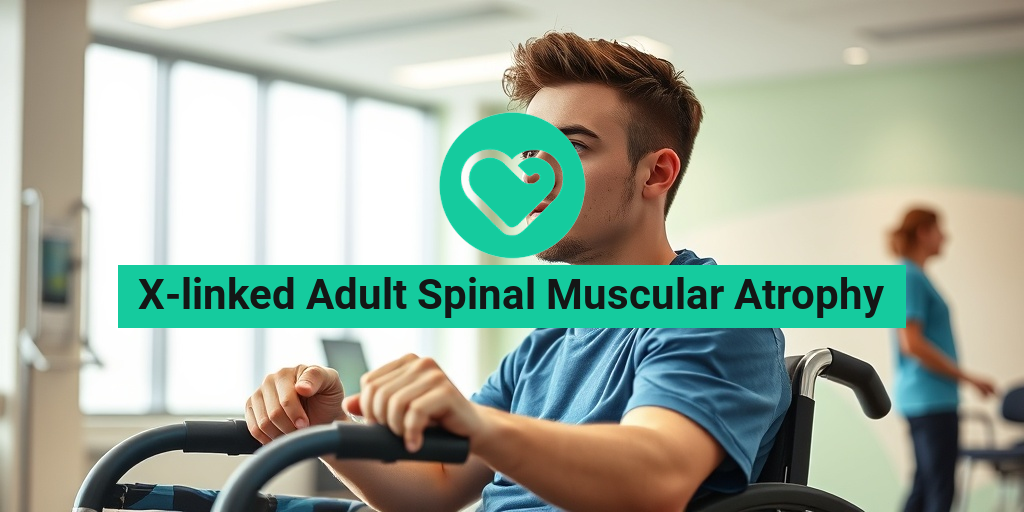What Is Rett Syndrome?
Rett Syndrome, also known as RTS, is a rare and complex genetic disorder that affects brain development, primarily in females. It is characterized by a period of normal early growth and development, followed by a slowing of skills, and then a loss of motor and language abilities. 🤕
Causes and Prevalence
Rett Syndrome is caused by a mutation in the MECP2 gene, which is responsible for producing a protein essential for brain function and development. This mutation leads to problems with the way the brain processes information and communicates with the rest of the body. According to the National Institute of Neurological Disorders and Stroke (NINDS), Rett Syndrome affects approximately 1 in 10,000 females worldwide, although it is likely that many cases go undiagnosed or misdiagnosed.
How Is Rett Syndrome Diagnosed?
Rett Syndrome can be diagnosed through a combination of clinical evaluation, genetic testing, and observation of symptoms. A diagnosis is typically made by a multidisciplinary team of healthcare professionals, including pediatricians, neurologists, and geneticists. While there is no cure for Rett Syndrome, early diagnosis and intervention can significantly improve the quality of life for individuals with the condition.
If you or a loved one is experiencing symptoms that may be related to Rett Syndrome, it’s essential to consult with a healthcare professional for an accurate diagnosis and guidance on the best course of treatment. You can also explore online resources, such as Yesil Health AI, which provides evidence-based health answers and support.
Rett Syndrome Symptoms
Rett Syndrome symptoms can vary in severity and impact, but typically include:
Early Signs
In the early stages, Rett Syndrome may not be immediately apparent. However, some common early signs include:
- Delayed or absent speech development
- Abnormal hand movements, such as wringing or clapping
- Loss of purposeful use of the hands
- Decreased muscle tone
- Abnormal walking or gait
Progressive Symptoms
As Rett Syndrome progresses, individuals may experience:
- Seizures
- Irregular breathing patterns
- Abnormal heart rhythms
- Scoliosis (curvature of the spine)
- Osteoporosis (bone weakness)
- Difficulty with coordination and balance
- Loss of cognitive and motor skills
It’s essential to remember that each individual with Rett Syndrome is unique, and the severity and progression of symptoms can vary greatly. With proper care, support, and treatment, individuals with Rett Syndrome can lead fulfilling lives and reach their full potential. 💕
Stay tuned for more information on Rett Syndrome, including treatment options, therapies, and ways to support individuals with the condition. 📚

Rett Syndrome Causes and Risk Factors
Rett Syndrome (RTS) is a rare and complex genetic disorder that affects brain development, primarily in females. While the exact causes of Rett Syndrome are still not fully understood, researchers have made significant progress in identifying the genetic mutations and risk factors associated with this condition.
Genetic Mutations
The primary cause of Rett Syndrome is a mutation in the MECP2 gene, which is responsible for producing a protein essential for brain development and function. This mutation leads to a deficiency in the MECP2 protein, disrupting the normal functioning of the brain. In some cases, mutations in other genes, such as CDKL5 and FOXG1, can also contribute to the development of Rett Syndrome.
X-Linked Dominant Inheritance
Rett Syndrome is an X-linked dominant disorder, meaning that a single copy of the mutated MECP2 gene is enough to cause the condition. Females have two X chromosomes, so even if one X chromosome carries the mutated gene, the other X chromosome can provide a functional copy of the MECP2 protein. However, in some cases, the mutated gene can dominate, leading to the development of Rett Syndrome.
Risk Factors
While Rett Syndrome can affect anyone, certain risk factors can increase the likelihood of developing the condition:
- Female gender: Rett Syndrome primarily affects females, although rare cases have been reported in males.
- Family history: Having a family history of Rett Syndrome or other genetic disorders can increase the risk of developing the condition.
- Genetic mutations: As mentioned earlier, mutations in the MECP2, CDKL5, and FOXG1 genes can contribute to the development of Rett Syndrome.
It’s essential to note that Rett Syndrome is not caused by anything the parents did or did not do during pregnancy. It’s a genetic disorder that occurs spontaneously, and researchers are still working to understand the underlying mechanisms.
Rett Syndrome Diagnosis
Diagnosing Rett Syndrome can be a complex and challenging process, as the symptoms can be similar to those of other conditions. A comprehensive diagnostic approach involves a combination of clinical evaluations, genetic testing, and behavioral assessments.
Clinical Evaluation
A healthcare professional will typically start by conducting a thorough clinical evaluation, which includes:
- Medical history: Reviewing the child’s medical history, including any developmental delays or abnormalities.
- Physical examination: Performing a physical examination to look for signs of Rett Syndrome, such as small hands and feet, and unusual hand movements.
- Neurological evaluation: Assessing the child’s neurological function, including cognitive and motor skills.
Genetic Testing
Genetic testing is a crucial step in diagnosing Rett Syndrome. This involves analyzing the child’s DNA to identify mutations in the MECP2, CDKL5, or FOXG1 genes. Genetic testing can be performed through:
- Blood tests: Analyzing a blood sample to identify genetic mutations.
- Chorionic villus sampling (CVS): Testing a sample of placental tissue during pregnancy to identify genetic mutations.
- Amniocentesis: Testing a sample of amniotic fluid during pregnancy to identify genetic mutations.
Behavioral Assessments
Behavioral assessments are used to evaluate the child’s cognitive, social, and communication skills. These assessments can help identify the characteristic features of Rett Syndrome, such as:
- Loss of purposeful hand movements
- Repetitive hand movements
- Difficulty with communication and social interaction
- Abnormalities in gait and balance
A comprehensive diagnosis of Rett Syndrome typically involves a multidisciplinary team of healthcare professionals, including pediatricians, neurologists, geneticists, and psychologists. 💊

Rett Syndrome Treatment
Rett Syndrome (RTS) is a rare genetic disorder that affects brain development, leading to severe physical and mental disabilities. While there is no cure for RTS, various treatments can help manage its symptoms and improve the quality of life for individuals with the condition. In this article, we’ll delve into the different Rett Syndrome treatment options available.
Medications for Rett Syndrome
Several medications can help alleviate specific symptoms of RTS, such as:
- Anticonvulsants: To control seizures, which are common in individuals with RTS.
- Muscle relaxants: To reduce muscle stiffness and spasms.
- Anxiety and mood stabilizers: To manage anxiety, depression, and mood swings.
- Gastrointestinal medications: To treat gastrointestinal issues, such as constipation and reflux.
Therapies for Rett Syndrome
In addition to medications, various therapies can help individuals with RTS develop new skills and maintain existing ones:
- Occupational therapy (OT): To improve daily living skills, such as feeding, dressing, and using the bathroom.
- Physical therapy (PT): To enhance mobility, balance, and coordination.
- Speech therapy: To improve communication skills, such as speaking and understanding language.
- Behavioral therapy: To address behavioral challenges, such as anxiety and aggression.
Alternative and Emerging Therapies
Some alternative and emerging therapies show promise in treating RTS, including:
- Gene therapy: A potential future treatment that aims to replace the faulty MECP2 gene responsible for RTS.
- Stem cell therapy: Research is ongoing to explore the potential of stem cells in repairing damaged brain cells.
- Histone acetylation: A process that can increase the expression of genes involved in RTS, as discussed in the Reddit hot title “A conversation about Histone Acetylation, increasing cortical GluN1 and GluN2B subunits, and restoring NAA levels with GTA.” 🧬
Rett Syndrome Home Care
While medical treatments and therapies are essential, providing proper care at home can significantly improve the quality of life for individuals with RTS. Here are some tips for Rett Syndrome home care:
Creating a Safe Environment
Individuals with RTS often have mobility and balance issues, making it crucial to create a safe environment at home:
- Remove tripping hazards and secure furniture to walls to prevent accidents.
- Install handrails and grab bars in key areas, such as bathrooms and stairways.
- Use non-slip mats and flooring to reduce the risk of falls.
Managing Daily Care
Daily care for individuals with RTS requires attention to their physical and emotional needs:
- Establish a routine for feeding, dressing, and using the bathroom.
- Provide regular exercise and physical activity to maintain mobility and strength.
- Encourage communication and social interaction to reduce anxiety and stress.
Supporting Emotional Well-being
Individuals with RTS often experience anxiety, depression, and mood swings. It’s essential to provide emotional support and create a calming environment:
- Encourage relaxation techniques, such as deep breathing and meditation.
- Provide a comfortable and cozy living space with minimal stressors.
- Offer emotional support and reassurance to reduce anxiety and fear.
By combining medical treatments, therapies, and proper home care, individuals with Rett Syndrome can lead more fulfilling lives. Remember, every individual with RTS is unique, and it’s essential to work with healthcare professionals to develop a personalized treatment plan. 💕

Rett Syndrome Outlook
Rett Syndrome (RTS) is a rare genetic disorder that affects brain development, leading to severe physical and intellectual disabilities. While there is currently no cure for RTS, researchers and medical professionals are working tirelessly to improve the outlook for individuals living with this condition.
Understanding the Prognosis
The prognosis for individuals with Rett Syndrome varies depending on the severity of the condition and the presence of any co-occurring medical conditions. In general, children with RTS may experience a period of normal development during the first 6-18 months of life, followed by a plateau or decline in skills.
As they grow older, individuals with RTS may experience a range of physical and behavioral challenges, including:
- Severe intellectual disability
- Loss of motor skills, including the ability to walk or use their hands
- Seizures and epilepsy
- Respiratory problems, including apnea and breathing difficulties
- Gastrointestinal issues, such as constipation and reflux
- Sleep disturbances and anxiety
New Research and Treatment Options
Despite the challenges associated with Rett Syndrome, researchers are making progress in understanding the underlying causes of the condition and developing new treatment options. Some of the most promising areas of research include:
Histone Acetylation: This process involves the addition of an acetyl group to histone proteins, which can help to increase gene expression and improve brain function. Researchers are exploring the use of histone acetyltransferase (HAT) inhibitors to increase cortical GluN1 and GluN2B subunits, which may help to restore normal brain function in individuals with RTS.
Gene Therapy: Scientists are working to develop gene therapies that can help to restore normal MECP2 gene function, which is mutated in individuals with Rett Syndrome. This may involve using viral vectors to deliver a healthy copy of the MECP2 gene to brain cells.
Restoring NAA Levels: N-acetylaspartate (NAA) is a neurotransmitter that plays a critical role in brain function. Researchers have found that individuals with RTS have lower levels of NAA, which may contribute to the condition’s symptoms. GTA (gamma-tocopherol acetate) has been shown to increase NAA levels and improve symptoms in individuals with RTS.
Living with Rett Syndrome
While Rett Syndrome presents many challenges, individuals with the condition and their families can take steps to improve their quality of life and manage symptoms.
Creating a Supportive Environment
Individuals with RTS often require a high level of care and support, which can be provided by family members, caregivers, and healthcare professionals. Creating a supportive environment involves:
- Providing a safe and comfortable living space
- Encouraging communication and social interaction
- Offering emotional support and reassurance
- Helping with daily living tasks, such as feeding, dressing, and grooming
Managing Symptoms and Behaviors
Individuals with RTS may exhibit a range of behaviors, including hand wringing, screaming, and aggression. Managing these symptoms and behaviors involves:
- Developing a behavior management plan with a healthcare professional
- Using positive reinforcement techniques, such as rewards and praise
- Providing a structured and predictable daily routine
- Encouraging relaxation techniques, such as deep breathing and massage
By understanding the outlook for Rett Syndrome and taking steps to manage symptoms and create a supportive environment, individuals with RTS and their families can improve their quality of life and look forward to a brighter future 🌟.

Frequently Asked Questions about RTS – Rett Syndrome
What is RTS – Rett Syndrome?
RTS – Rett Syndrome is a rare genetic disorder that affects brain development, primarily in girls. It is characterized by a period of normal development followed by a loss of motor skills and speech.
What are the symptoms of RTS – Rett Syndrome?
The symptoms of RTS – Rett Syndrome vary from person to person, but may include:
- Loss of motor skills and coordination
- Difficulty with speech and communication
- Seizures
- Abnormal hand movements
- Difficulty with walking and balance
- Abnormal breathing patterns
What causes RTS – Rett Syndrome?
RTS – Rett Syndrome is caused by a mutation in the MECP2 gene, which is responsible for regulating gene expression. This mutation leads to abnormalities in brain development and function.
Is there a cure for RTS – Rett Syndrome?
Currently, there is no cure for RTS – Rett Syndrome. However, various treatments and therapies can help manage the symptoms and improve the quality of life for individuals with the disorder.
How is RTS – Rett Syndrome diagnosed?
RTS – Rett Syndrome is typically diagnosed through a combination of clinical evaluation, genetic testing, and observation of symptoms.
Can RTS – Rett Syndrome be inherited?
RTS – Rett Syndrome is usually caused by a spontaneous mutation in the MECP2 gene, and the risk of inheritance is low. However, in some cases, the mutation can be inherited from a parent.
What is the prognosis for individuals with RTS – Rett Syndrome?
The prognosis for individuals with RTS – Rett Syndrome varies depending on the severity of the symptoms and the effectiveness of treatment. With proper care and management, many individuals with RTS – Rett Syndrome can lead fulfilling lives.
Are there any promising treatments for RTS – Rett Syndrome?
Researchers are exploring various potential treatments for RTS – Rett Syndrome, including gene therapy, histone acetylation, and increasing cortical GluN1 and GluN2B subunits. These treatments aim to restore normal brain function and improve symptoms. 💡
How can I support someone with RTS – Rett Syndrome?
Supporting someone with RTS – Rett Syndrome involves providing emotional support, encouraging independence, and helping them access necessary therapies and treatments. You can also raise awareness about the disorder and advocate for research and funding. 🌟
Where can I find more information about RTS – Rett Syndrome?
There are many resources available for learning more about RTS – Rett Syndrome, including the International Rett Syndrome Foundation, the Rett Syndrome Association, and online support groups. 📚




